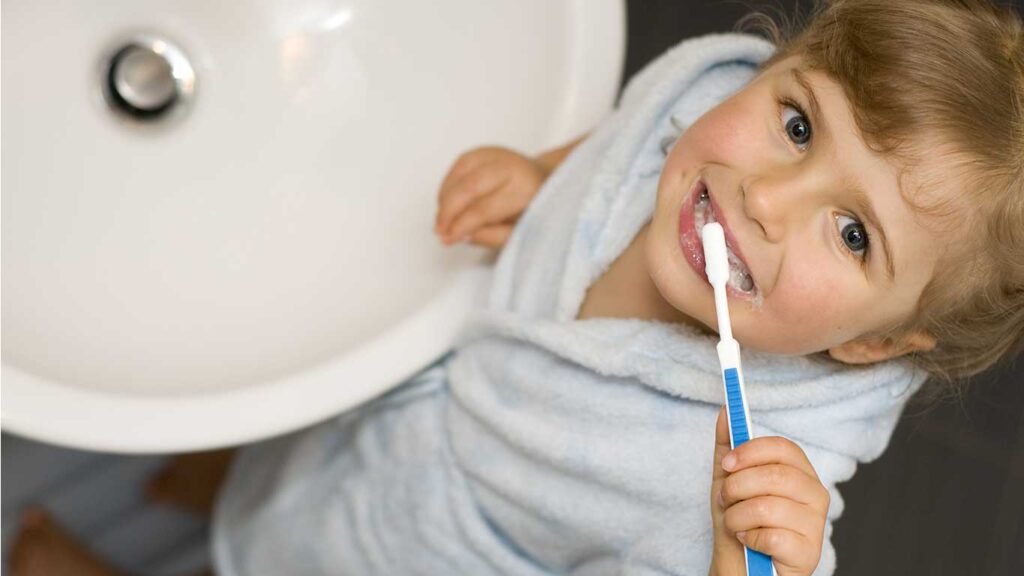
What to do if your child has a knocked-out tooth
As we head into the warmer months of spring and summer, the risk of dental trauma injury in kids is a lot higher. In this article we are going to give you specific instructions of what to do if your child has a knocked-out tooth.
About 90% of all kids’ dental trauma injury involves the upper front teeth, which are the most visible teeth in the mouth. Between the ages of 2-3 are when the most common trauma to baby teeth occurs, since kids are just beginning to walk. As a child gets older, injuries to the mouth in sports become the leading cause of dental trauma. This then becomes more concerning, since a child more than likely has permanent teeth that can be affected. Even if a child does not play sports, they are still at risk for a dental trauma injury, as it can happen any time. Outside of sports, bicycle riding is the leading cause of injuries to the mouth in children.
If your child has knocked out their tooth, we have a video that shows you what to do for a dental trauma injury to kids.
Just as with any dental injury, please immediately contact your child’s pediatric dentist for professional care. Your child’s pediatrician or the emergency room are likely not properly equipped or experienced in dealing with a tooth that has been knocked out.
First you want to determine with your child’s injury what the extent of the damage.
Is your child alert and stable? If so, then you can focus on the injury to the tooth.
If the tooth is completely knocked out, try to locate it. If you do find it, follow these steps below:

1.

2.

3.

4.
Gently rinse the tooth with milk, saline, water or saliva. DON’T TOUCH THE ROOT OR SCRUB THE TOOTH!
Put the tooth in a container that can be sealed, along with the milk, saline or saliva. DON’T store the tooth in water.
Place over the child’s socket (where tooth was knocked-out) a damp gauze and have them bite gently
Call your pediatric dentist as soon as possible.

1.
Gently rinse the tooth with milk, saline, water or saliva. DON’T TOUCH THE ROOT OR SCRUB THE TOOTH!

2.
Put the tooth in a container that can be sealed, along with the milk, saline or saliva. DON’T store the tooth in water.

3.
Place over the child’s socket (where tooth was knocked-out) a damp gauze and have them bite gently

4.
Call your pediatric dentist as soon as possible.
Studies reveal that 13-39% of all dental injuries in children are sports related
In the US, there are about 30 million children who participate in organized sports every year. Protecting their dental health and wellbeing is a top priority in our office.
While it is more commonly believed that football and hockey are sports that cause the most dental injury. In actuality, baseball and basketball are the sports with a much higher rate of injury for children between the ages of 13-17. Children who are engaged in any contact sport should use a mouth guard to minimize and/or prevent damage to their permanent teeth.
A custom mouth guard can be made by your pediatric dentist. These are typically more comfortable, have better protection and if made by Alpine Pediatric Dentistry can be customized with your sports team’s logo and your child’s jersey number.
If your child has a knocked out tooth, please call our office right away. If it is after hours, you can reach us through our emergency phone number and you can upload photos to expediate your child’s care, by clicking here.
Considering getting your child a custom mouth guard? Click here for more information.
Statistics for Dental Trauma injury in children
- Sports-related injuries are found highest in males from the ages of 15-17.
- Children between the ages of 7-11 are at higher risk for a dental trauma injury
- The most common sports product related to a child’s dental injury are bicycles
- Dental trauma injuries to baby teeth mainly occur when children are 2-3 years of age
- Falls are the main cause of dental trauma in kids









